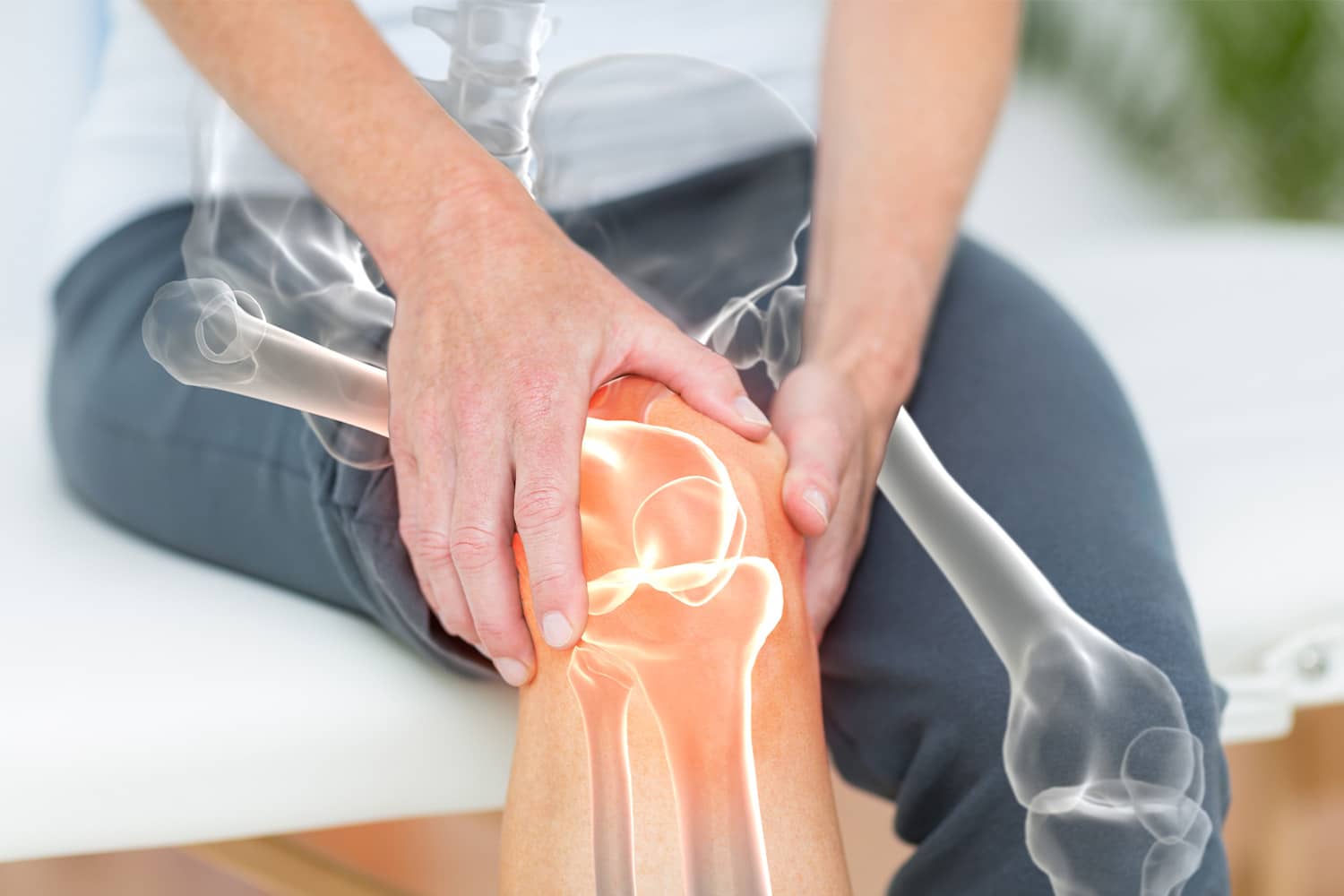Maybe you wake up in the morning with low back pain, limp a little after sitting because your knee is freezing up, or often find yourself dealing with stomach aches.
We are all affected by pain at some point. Maybe it’s just your average ache, or maybe it’s a more serious ailment — maybe you have daily, persistent pain that just won’t let up.
*Whatever the case may be, there are many different types and causes of pain that affect our quality of life in different ways. At Muscle MX, we like to inform you about different types of pain so you can better understand your body.
Why Do We Feel Pain?
In many ways, the fact that we feel pain is a good thing — if we didn’t experience pain, we wouldn’t know that something was wrong.
We feel physical pain thanks to cells in our bodies called nociceptors. When we get hurt, these cells send signals to our brains to let us know that there’s a problem.
Depending on how severe the pain is, your nociceptors will tell your brain what to feel. If you drop a hammer on your foot, for example, these cells will tell your brain that your foot has been injured, and you’ll know it immediately.
Alternatively, if you ate something that didn’t agree with you, the onset of pain would take longer because the discomfort in your stomach isn’t immediate.
What Are the Different Types of Pain?
If you’re dealing with pain of any kind, learning about the different types of pain can help you better understand why you are dealing with discomfort and what you can do to find relief.
When pain strikes, we don’t always take the time to consider what might be causing it, when it started, or what makes it better or worse. It can be easy to get used to just dealing with the pain — but understanding where it is stemming from is key to regaining your power.
Some types of pain gnaw at us over days, weeks, months, or even years, while other pain is short-lived. There are also some types of pain that come and go depending on our physical activity, what we eat, or even how we feel emotionally. That said, here is a closer look at some of the different types of pain.
Nociceptive Pain
Because pain usually has to do with our nociceptors being stimulated, one of the two main types of pain is called nociceptive. In the nociceptive category of pain, there are two main types:
Somatic Pain
This type of pain is felt when the nociceptors in your body’s soft tissue are stimulated. This could be from a cut, gash, sprain, or scratch, or it could be something like the inflammation of a muscle or pain from a rise in temperature (like a sunburn). Somatic pain is localized, meaning that it hurts in a particular area of your body.
Often, this type of pain is described as:
Visceral Pain
Unlike somatic pain, visceral pain is felt much deeper because it’s caused by damage or disruption to the internal organs. If you suffer from an aching stomach from irritable bowel syndrome or you have intense painful cramps from your period, for example, you already know the feeling of visceral pain. (Tramadol)
Often, those dealing with a visceral type of pain will describe feeling pressure or a deep aching somewhere in their body.
Acute Pain
When you experience acute pain, it’s usually sudden and sharp. This is the type of pain you get when you injure yourself playing sports, lifting weights, or working around the house.
Usually, this pain hurts horribly at first, but slowly starts to feel better. Twisting an ankle while hiking, for example, leads to acute pain.
Other examples of acute pain include:
-
Breaking a bone
- Cuts, scratches, and lacerations
- Burns
- Muscle pulls, strains, and tears
- Post-surgery pain
The good news about acute pain is that because it’s usually very physical, the worst pain is always in the beginning, and it will get better from there as things heal.
Chronic Pain
The main difference between acute and chronic pain is how long it lasts. While acute pain usually starts getting better immediately, chronic pain can last for months or even years. If you’ve ever had knee surgery, for example, there’s a chance that you may have experienced some chronic knee pain even after your recovery.
While injuries and surgeries can cause chronic pain, physical conditions like rheumatoid arthritis, osteoarthritis, or fibromyalgia can also lead to chronic pain. Having a condition that causes chronic pain can be a debilitating and limiting experience — many of the activities you were once able to do easily become difficult or even impossible.
Chronic pain can be one of the most challenging types of pain to deal with, and it can lead to mental health consequences.
Treatment options for chronic pain often include physical therapy, prescription anti-inflammatories like celecoxib or naproxen, prescription nerve medications like gabapentin, and alternative therapies like chiropractic care and acupuncture.
Breakthrough Pain
If you’re suffering from chronic pain and suddenly have an increase in pain or a flare-up, this is known as breakthrough pain.
There can be many reasons for breakthrough pain, such as:
-
-
- Increased activity
- Changes in medication or treatment
- Changes in routine
If you’re dealing with chronic back pain, for example, you may keep it under control with pain medication. However, if you suddenly stop taking your medication or decide to tackle a home renovation project, you may experience some breakthrough pain.
Similarly, if you injure your knee and need to take a break from running or jogging for a while, you may have breakthrough pain the first time you start that high-impact physical activity again.
Neuropathic Pain
Another type of pain that differs from nociceptive pain is neuropathic pain. The difference with this type of pain is that instead of coming from stimuli to the nociceptors, it comes from damage to the nervous system.
When our nervous system doesn’t work the way it’s supposed to, the nerves can become confused and send pain signals that cause discomfort or even a lack of feeling. This kind of pain is often described as:
- Shooting
- Burning
- Stinging
- Numbing
- Tingling
Nerve pain (or “neuralgia”) can be hard to diagnose because it can sometimes seemingly come out of nowhere. Another difficulty is when you feel pain, but there’s no visible problem or injury. This can make neuropathic pain extremely challenging to deal with mentally and emotionally.
Neuropathy
Damage to the nerves is often called “neuropathy,” or more specifically, “peripheral neuropathy.” When you suffer from peripheral neuropathy, you experience pain, tingling, and burning sensations in your hands and feet.
Neuropathy is often degenerative, meaning that it can get worse over time as more damage is done to the nerves.
Fibromyalgia
Another neuropathic pain condition is fibromyalgia.
More research is still needed to understand why and how fibromyalgia manifests. However, people who experience fibromyalgia may complain of:
- Pain all over the body
- Difficulty sleeping
-
Feeling tired all the time
-
Digestive problems
-
Numbness, tingling, or burning in the hands and feet
-
Experiencing brain fog
Autoimmune Diseases
Sometimes health conditions like diabetes, lupus, or celiac disease can cause neuropathic symptoms due to damage in the nervous system. This can be confusing because having neuropathic pain can seem disconnected from the other symptoms.
One of the most difficult aspects of experiencing neuropathic pain is the frustration of not knowing why it’s happening or where it’s coming from. Because it can come and go without much explanation, neuropathic pain can cause a great amount of stress.
Because it is usually chronic, it’s very easy to become reliant on prescription pain medication or antidepressants just to feel normal.
How Can You Identify Your Type of Pain?
One of the important steps in figuring out how to help with your pain or discomfort is being able to describe it well.
Here are some important things to think about when talking about your pain with a doctor, your family, or even just yourself:
-
-
- When did the pain start? Has it always been this bad, or is it getting worse over time?
-
- What kind of things seem to help you feel better? Are they physical, mental, emotional, or all three?
-
- Has there been any “breakthroughs” or “flare-ups?” What seemed to cause them?
-
- On a scale of 1-10, how severe is the pain? Does the number change with more or less activity?
-
- Have any foods, medications, supplements, other treatments, or interventions either helped or made your pain worse?
-
Is the pain localized or more general?
Getting Relief From Pain
Whatever type of pain you experience, trying to get answers about how to alleviate it can seem like a daunting task. If you’re struggling with persistent, acute, or chronic pain, you’re not alone, and the pain doesn’t have to be forever.
Understanding the many different types of pain, as well as their causes and treatment options, can help you narrow down the potential causes of your own symptoms — and this is the first step toward finding lasting relief.
Sources:
Nociceptors: the sensors of the pain pathway | JC
Celiac Disease and Peripheral Neuropathy | BeyondCeliac.org

















































